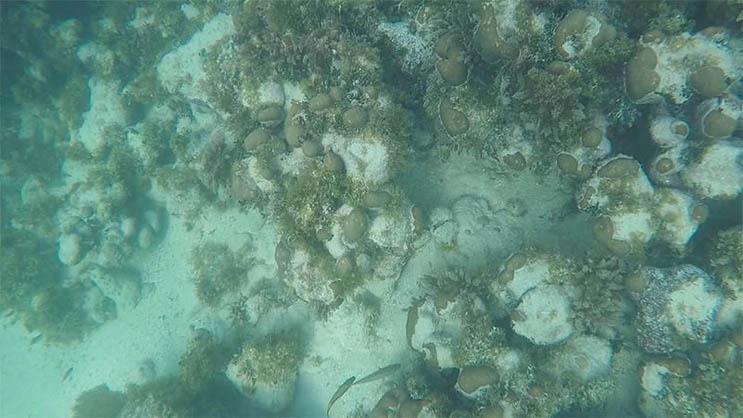Septic's Consequences — The Embodiment Of Unnatural Disasters
By George Vorsheim*
While septic systems are a viable and undeniably popular choice for wastewater treatment, they are ultimately only as reliable as their upkeep. Can we trust the technology and the human element to protect our waterways from pollution, or is it time to search for better solutions?
The once crystalline canals and turquoise waters off the Florida Keys metamorphosed into murky green, beaches were posted with “no swimming” signs, and the famed coral reefs began to bleach and die. Clam and bay scallop fisheries off Long Island are near a state of complete collapse. Work crews throughout the Caribbean and along Mexico’s 250- mile Riviera Maya collect tons of Sargassum seaweed daily from their beaches.
All are partially spawned by a quickening man-made ecological decline that began in 1884 when septic wastewater treatment techniques were imported from France. Today, septic tanks and their backyard drain fields serve 23 percent of the nation’s 115 million occupied homes. The estimated 40 percent that do not function properly are leaking hundreds of millions of gallons of raw, untreated wastewater with nitrogen, phosphorus, and other contaminants into the nation’s water supply.
A new septic system costing as little as $3,000 to $5,000, installed with optimal site conditions and properly maintained with septage removal every three to five years, can be an effective treatment of household wastewater for up to four decades. A nitrogen reduction system can cost at least $15,000 but does little to counter phosphorus, a key element in the eutrophication of freshwater and some coastal bodies. The problem is, even the best systems fail because they are poorly maintained or are past their lifespans.
A Growing Threat
And the rate of new septic installations and failures is multiplying. The United States’ coastlines are now home to 39 percent of its total population and growing by another 10 million people (or 8 percent) this decade. For almost every new resident who arrives, there is a developer ready to build housing with an inexpensive, down-and-dirty septic system in lieu of gravity sewers that in many cases are unaffordable for local governments, inappropriate for sandy or clay soils and high-water tables, and — like waterlogged septic drain fields — can leave regions inundated with raw sewage after hurricanes, normal storm events, or mechanical issues like lift station failures.
When wastewater is discharged into rivers and lakes and onto shorelines — whether through subsurface flows from septic or overflowing sewers — nitrates, phosphorus, and pathogens can cause human disease through direct consumption, recreational contact, or ingestion of commercial shellfish. Other times, homes and businesses are contaminated after septic back-ups.
Human health risks notwithstanding, the world’s fresh and marine waterbodies brim with plants, animals, and other organisms that in many regions are under siege from red and brown tides, blue-green algae, and seaweed. Algae is now found in many waterways of all 50 U.S. states, with farming and livestock an additional source of contamination.
Waters off the Florida Keys thrive in low-nutrient conditions, but until recently, on-site wastewater treatment systems (septic, latrines, straight pipes, and cesspits) serving 75,000 residents and four million annual visitors loaded them with extra nutrients, bacteria, viruses, and other organic wastewater compounds. Water quality decline was therefore inevitable due to eutrophication — oxygen depletion resulting from the dissolved nutrients stimulating aquatic plant growth. Water clarity disappeared, as did some mammals and fish, and the world’s third-largest living coral reef was threatened. Today, Monroe County is completing a $1.2 billion wastewater infrastructure upgrade.
Hot Spots For Pollution
Although often associated with rural areas, about half of the nation’s septic tanks are located in urban and suburban neighborhoods like Long Island’s Suffolk County, whose population of 1.5 million people relies on 365,000 septic systems — and an estimated half are polluting the environment. The result is a rust-tide algae, intensifying in recent years, leading to beach closures and taking a toll on the shellfish industry. A planned conversion to gravity sewers in the 1970s was quickly scuttled by delays, cost overruns, and indictments. Since then, gravity sewers have become cost-prohibitive, and the county is embarking on a conversion from septic to a sealed system of all-terrain sewers, also known as pressure sewers, which are not hazardous and about half the cost.
The effects of land-based nutrient pollution can be found in the Amazon, the Congo, the Mississippi River, and elsewhere, but now is nurturing leafy, brown and dark red Sargassum infestations beaching in huge clusters throughout the Caribbean and South Florida. Regarded by some scientists as “one big algae bloom,” last year’s invasion reached record levels, leading Barbados to declare a national emergency. The sheer masses of seaweed often hold fishing boats captive at their docks on islands like Dominica. One blogger in the Dominican Republic wrote that, “I know divers who can swim down our barrier reef and tell you resort by resort whose septic systems aren’t working.”

Mexico’s famed resort towns between Cancun and Belize have employed a new workforce of men with pitchforks and wheelbarrows to collect mountains of what locals now call a “black wave” of seaweed. Tulum, a thriving village ranked alongside Ibiza as one of the world’s trendiest locales, has grown so fast that less than 10 percent of its boutique hotels and businesses are connected to a municipal sewer. Most rely on septic systems, which are designed to leak. As a result, wastewater — often containing other substances ranging from soap and skincare products to even Viagra — quickly leaches through limestone into the Yucatan’s famed system of underground streams and cenotes to the formerly neonblue breakers the barely functioning septic systems have polluted.
State Of Concern
In the U.S., local, state, and federal entities typically have statistics and laws regulating virtually everything, but septic is a rare exception. Federal laws? No agency establishes them. And septic is not covered by the Clean Water Act. The only rough estimates of the number of septic systems are collected by the U.S. Census Bureau.
State and local laws are equally scarce. At their harshest, they will forbid repair or permits for new construction if the home or business is within a reasonable distance (usually about 300 feet) from a gravity sewer main.
In Florida, an estimated $18.4 billion is needed for wastewater infrastructure upgrades. In Miami-Dade County, an estimated 108,000 properties use septic, and half are estimated to malfunction yearly, many due to rising seawater and groundwater tables. Planners calculate the price tag of septic tank removal and connection to the county’s sewer system at $3.5 billion. Some wonder if the conversion is worth it given that sea-rise calculations for the next 20 to 40 years predict many of its communities could be underwater and abandoned.
Statewide, wastewater became an embarrassment following Hurricane Irma in 2017 when flooded gravity systems and septic drain fields prompted national headlines like, “Irma Leaves Florida Streets Flooded with Raw Sewage” and “Florida’s Poop Nightmare Has Come True.” Septic awareness finally hit home in a state where 2.6 million septic systems — 12 percent of the nation’s total — represent one-third of its wastewater infrastructure.
Florida has tried and failed, and, in 2019, the legislature began trying again to regulate septic. In 2010, the legislature passed a law requiring septic owners to get an inspection every five years to demonstrate their tanks weren’t polluting the environment. After a rebellion by septic owners who complained the cost ($300 to $500) was too high, then-Gov. Rick Scott signed a repeal before the law could even be implemented.
In the aftermath of Irma and other storms, Floridians were surprised and pleased that one of the first actions taken by the new governor and 2019 legislative session in early January was the proposal of a comprehensive and far-reaching set of regulations to identify and map the state’s septic tanks, create minimum standards for functioning systems, enact repair and pump-out rules for owners, and offer financing for failing tanks and drain fields. Maybe the state truly was ground zero in the war on septic.
Several proposals appear to have hope of passing. Yet, what began as a seemingly nonpartisan mandate to instill individual responsibility has devolved into yet another clash with septic owners and intense lobbying efforts by developers (an estimated 40 percent of the 900 people moving to Florida daily will use septic). Even real estate agents are telling lawmakers it was unfair to require them to disclose a failing septic system to potential homebuyers. Ironically, it’s septic owners who often object to new gravity or all-terrain sewers with the argument that they will open the door to growth and developers.
Regardless of which side of the debate you are on, the danger to public health and the environment from failing septic systems is irrefutable and clearly visible. How much more do we have to lose before we can collectively agree on meaningful and much-needed beneficial changes?
About The Author
 George Vorsheim is director of communications for Environment One Corporation and a member of the Water and Wastewater Equipment Manufacturers Association (WWEMA) Board of Directors. For more information about WWEMA, go to www.wwema.org.
George Vorsheim is director of communications for Environment One Corporation and a member of the Water and Wastewater Equipment Manufacturers Association (WWEMA) Board of Directors. For more information about WWEMA, go to www.wwema.org.
*with Joseph Harmes, freelance writer
